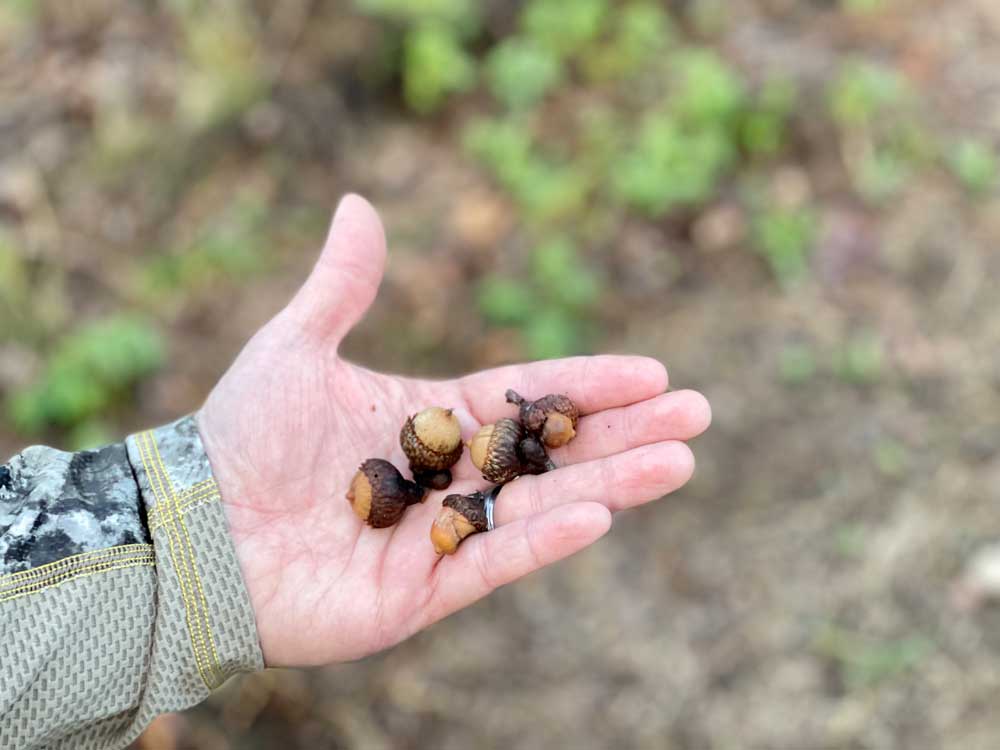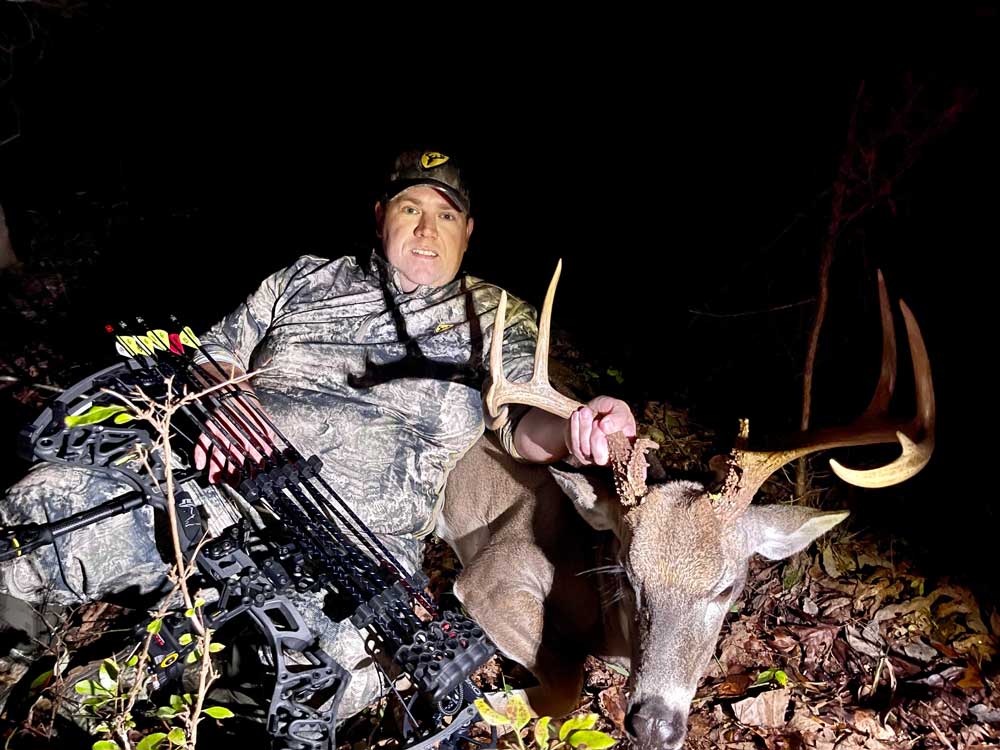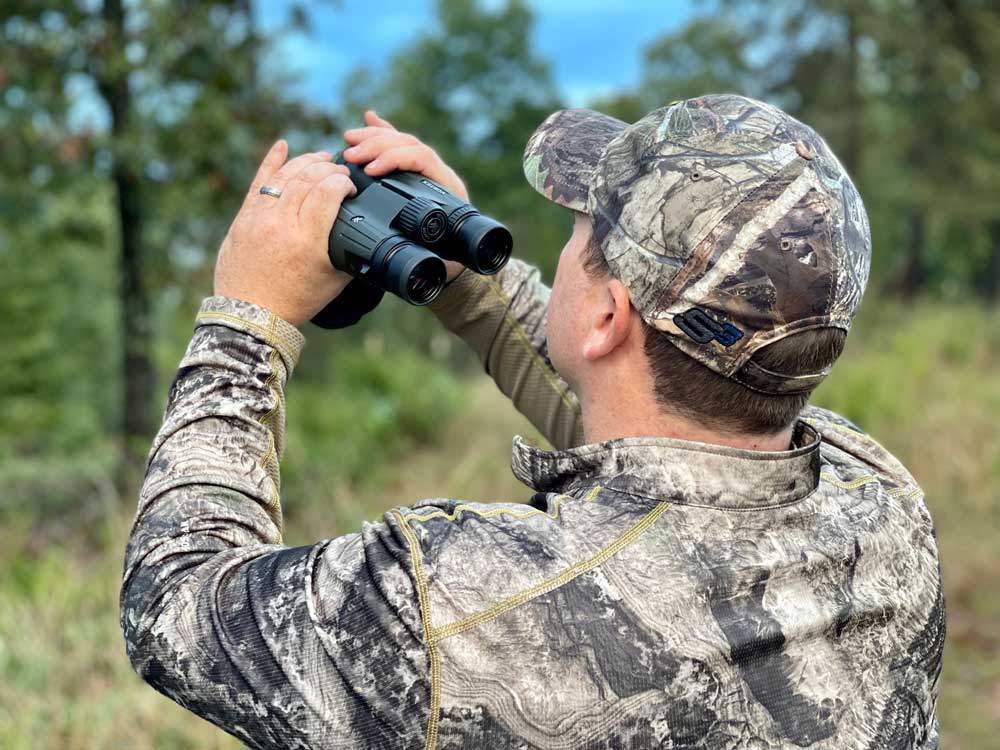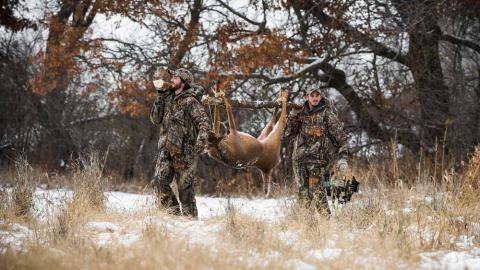Heath Wood

After a period of less-than-ideal movement on my Muddy Manifest cellular camera, I elected to relocate. While taking down the camera, I noticed several rubs on the edge of the timber a few yards away. The three to four rubs on small trees garnered my attention. However, it was the ground around the area that had me the most intrigued.
The dirt and leaves in the area were torn up in similarity to hogs that had been feeding. Upon closer investigation, I realized the white oak acorns were plentiful, and the deer had honed in on their favorite food source. I knew I should probably keep the camera in the area yet pointed in the direction of the large feeding area. I did just that. After a few days, I began seeing a wide ten-pointer with a bent brow tine. Thus, I named the buck lazy brow. I watched the lazy brow and two other bucks who stayed in their bachelor group and stayed near my hunting area throughout the summer.
On October 4, I looked on my Drury DeerCast app to see that the upcoming Sunday was predicted to be a good day to hunt. When at least two shooter bucks began showing up on camera again, I knew I needed to be in the stand soon. With the wind direction in my favor and DeerCast showing good, I chose to get in my stand at 3 p.m. At approximately 4 that evening, I began seeing deer feeding on the edge of the field where ten to twelve white oak trees were located. A steady stream of deer activity continued throughout the evening, including a young eight-pointer that fed around for an hour. Finally, at 6:20 p.m., a buck came leaping over the fence into the field at a mere 60 yards away. Immediately, I saw the bent-over brow tine, and I knew it was lazy brow.

After confirming that it was him, I moved my Bear Archery Redemption EKO bow in front of my face to help conceal me from the approaching buck. When I moved, a smaller buck feeding to my left caught my movement and started stomping his foot, trying to make me move. I changed my gaze from the smaller buck to Lazy Brow to see if he was still walking my way, moving only my eyes. Finally, the small buck turned and went back to feeding. By now, the larger buck had made it to 25 yards. Still facing me, yet looking down, I drew the Redemption EKO to full draw. I guess it was meant to be, because when I made it to full draw, the buck turned broadside and stopped. I made a double lung shot with my SIK Broadheads SK2 mechanicals. The buck ran down the hill at a mere 60 yards and crashed.
When there is a better than average acorn crop, the action can be as good as when bucks are in full swing of the rut. For years, many hunters have heard that the action gets slower in the first part of October, even giving it the nickname, the ‘October Lull.’ This lull is when deer become less active in crops or food plots and move less. Many hunters think that deer simply do not move as much during this time, and in some cases, hunters stop hunting until the action picks up in late October, when the rutting activity is beginning to take place. In reality, acorns are falling from trees during this time, enticing deer to leave the food sources they have been on all summer to feed on them instead. When deer leave the green food sources, hunters often assume that deer are not as active. Do not take the ‘October Lull’ theory as an excuse to skip hunting. Hunters can still be successful in October by scouting in August to avoid the change of pattern from green food sources to acorns. I often hang treestands over food plots or areas where early-season movements are found during the summer. Yet, I also begin scouting early, mostly looking for areas where white oak trees are plentiful. After finding a group of oaks, I take my Vortex Viper HD binoculars and look in the limbs, trying to scout where the best crops of acorns will be found.

Looking for a mass crop of acorns can be hit or miss. I often hear people say, “I don’t have any acorns this year,” yet someone who lives a few miles away will state they have acorns everywhere. Many variables influence the acorn crops in specific areas. The amount of moisture and cold weather plays a vital role as acorns begin to bud out during the spring season. I have encountered trees that have an abundance of acorns on the same farm as other trees that do not. The unpredictability of where acorns will be is why I scout in August. When I find where acorns seem plentiful, I hang a stand nearby to hunt when deer change their patterns in early October.
By having my stand already in place, I was able to find the signs of deer feeding on acorns. I caught bucks still on a feeding pattern, including the mature buck I harvested. The ‘October Lull’ is said to be when deer end their summer feeding patterns until the pre-rut starts in late October. If one focuses on the white oak acorn crop during this time, they will see the feeding patterns are still there; only the food the deer are feeding on is different. There is no lull, the action is good, and mature bucks can be taken by adjusting where you hunt.




























